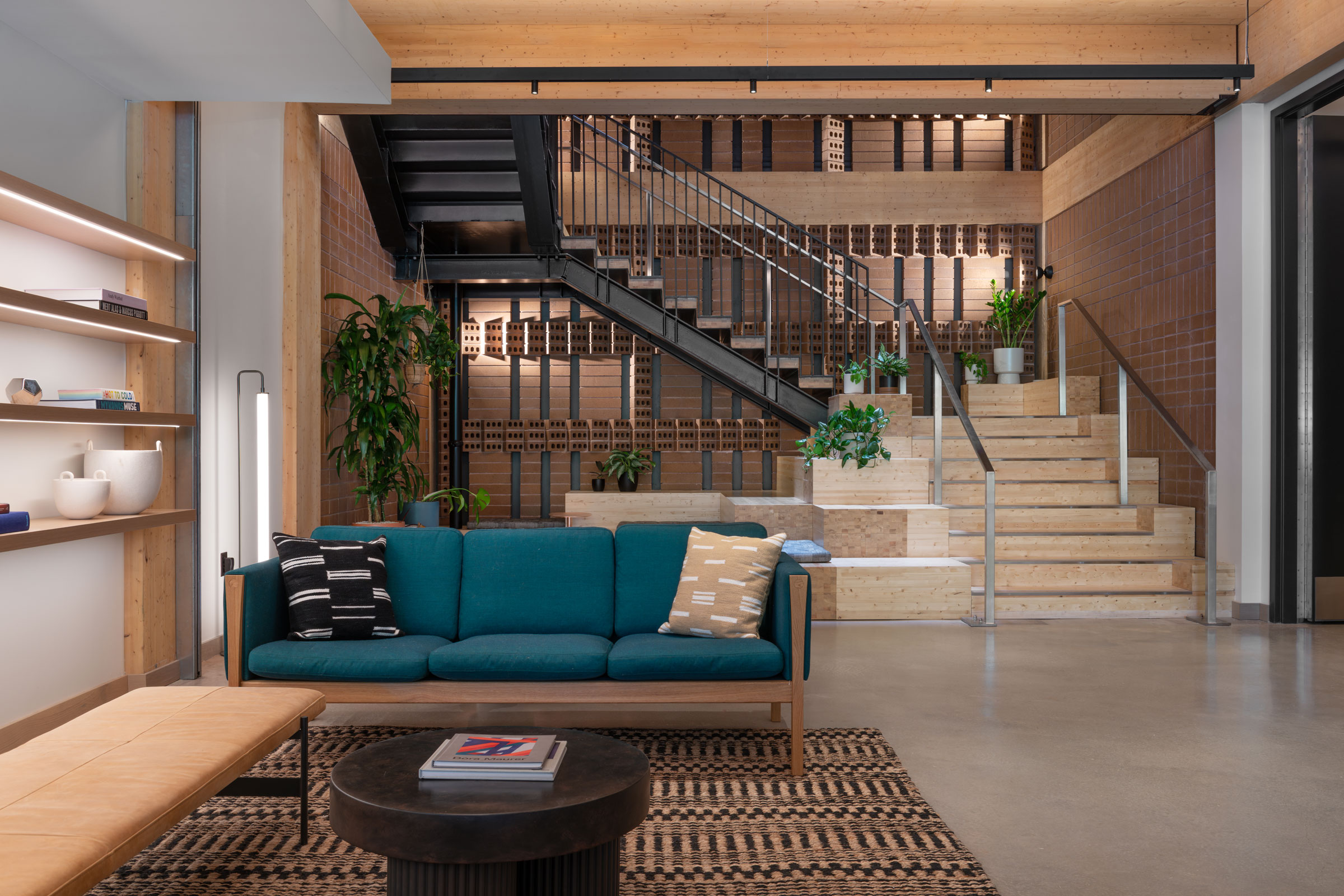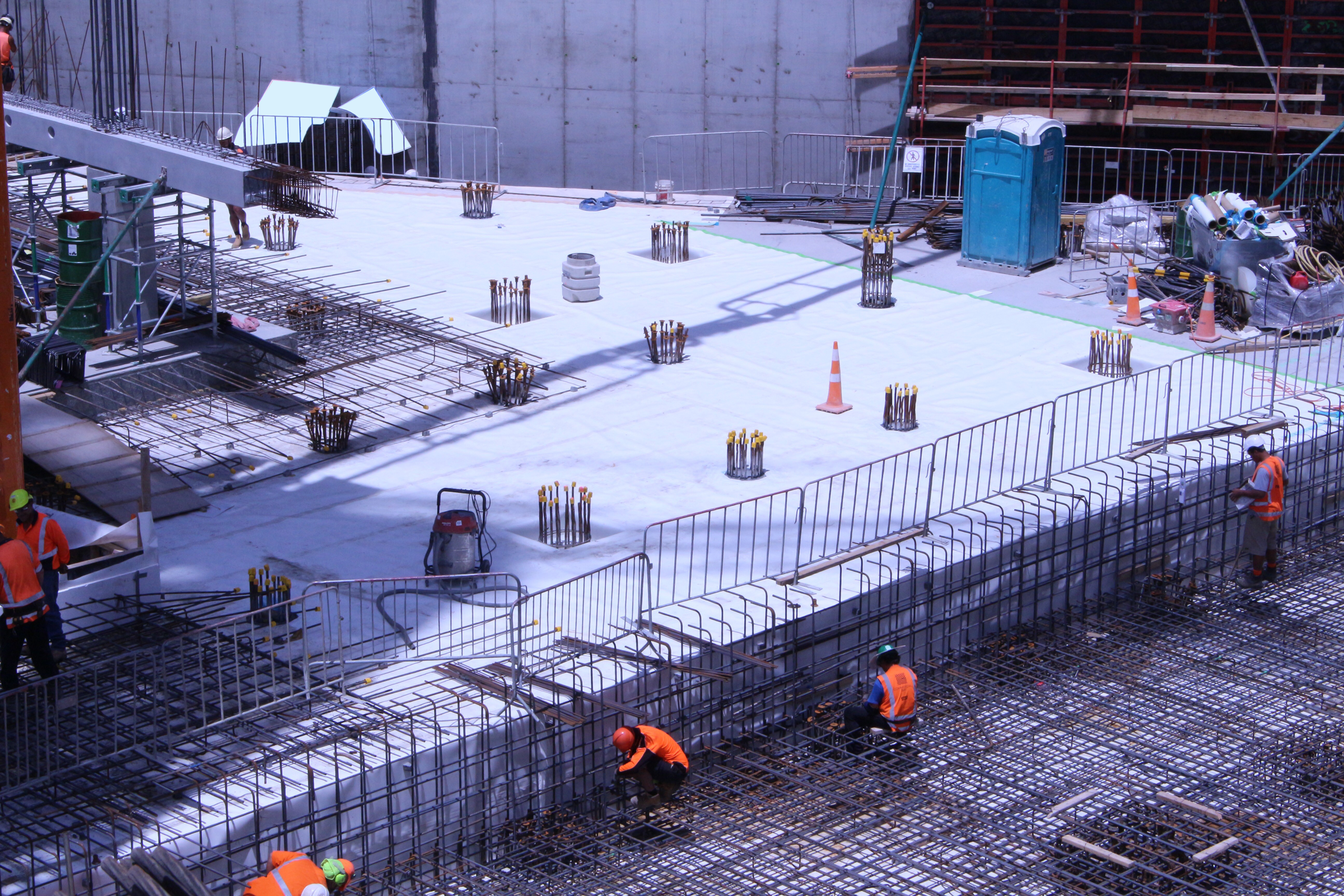Story at a glance:
- DLR Group designed T3 ATX Eastside in Austin, Texas, to be a beacon of biophilic design while reflecting the area’s evolution.
- Mass timber is a strong material choice for its many benefits, from aesthetics to acoustics to well-being.
- Modular, prefabricated panels assembled onsite enable mass timber design to achieve construction timelines up to 25% faster than concrete structures.
Biophilic design has evolved beyond visual aesthetics and subtle nods to nature; it’s a curated experience intentionally crafted to evoke emotion. Unexpected elements orchestrate a sensory journey that enhances well-being while infusing spaces with quiet calm.
Through daylighting, materiality, or spatial flow, biophilic design breathes the richness of nature into interior spaces. At a time when most people are estimated to spend around 90% of their time indoors, reconnecting with the rhythms of the outdoors is more than a luxury; it’s a necessity that provides benefits for both people and the planet.
Bringing the Outdoors In
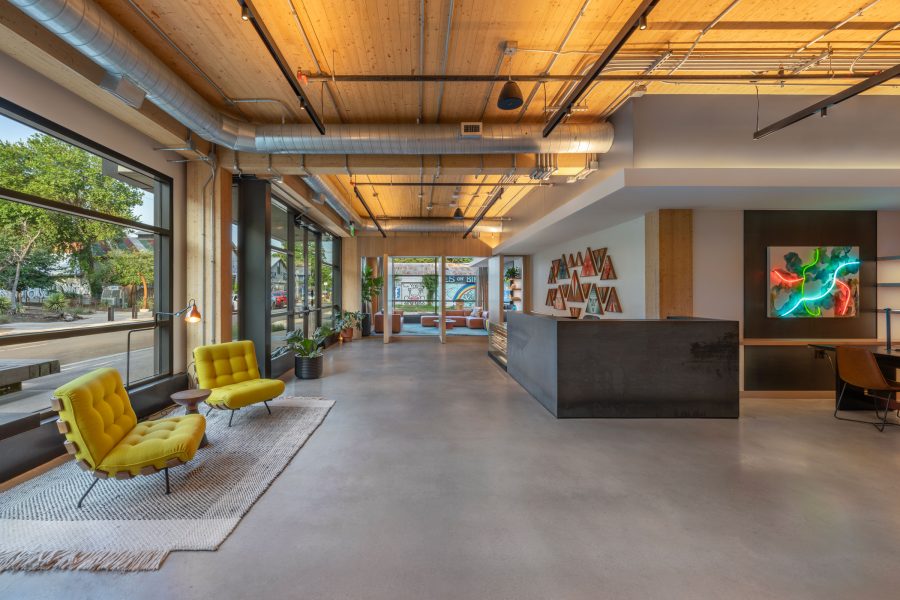
T3 ATX Eastside is a new office and residential development rooted in the local history of the industrial site through a focus on materiality and refinement of metal and wood. Photo by Connor Steinkamp, courtesy of DLR Group
Biophilic design transforms buildings into living landscapes, centering well-being by weaving nature’s patterns, textures, and colors into every corner. While biophilic principles date back centuries, today’s applications are evidence-driven, informed by research into the mental and emotional health benefits.
Design choices go beyond greenery. Materiality like dynamic lighting to support circadian rhythms, natural textures, biomorphic patterns, palettes inspired by local landscapes, and low-toxin materials elevate indoor air quality and overall health. Each of these design decisions create a multi-sensory experience:
Visual: Living walls filled with greenery serve as visual anchors. Lighting fixtures produce dappled light patterns, emulating sunlight peering through tree canopies and reinforcing our connection to the natural world. Earthy browns, calming greens, and soft neutrals define interiors, creating a sense of warmth and renewal.
Sound: Soothing soundscapes, like the gentle flow of water or the soft hush of wood underfoot, mirror nature’s rhythms. These natural soundscapes echo the cadence of the wild, settling nerves and regulating attention.
Scent: Natural scents like pine, mint, eucalyptus, citrus, and sea salt can evoke calming energy and elevate mood while enhancing indoor air quality and turning each breath into a gentle reminder of the outdoors.
Touch: Natural textures invite people to reach out and connect with their environment. From solid wood to ultra-soft wool, these tactile experiences help ground the mind and body in the present moment.
Intentionally placed biophilic materials soften the divide between shelter and landscape. Of these elements, wood, especially mass timber, embodies the principles of biophilic design and is increasingly used in today’s built environment.
Mass Timber in Biophilic Design

Sustainably sourced wood gives T3 ATX Eastside, designed by DLR Group, a lighter carbon footprint and embodied carbon advantages over traditional concrete or steel construction. Photo by Connor Steinkamp, courtesy of DLR Group
Mass timber provides an elemental sensory experience through its acoustic absorption, natural scent, and grain texture that invites you to reach out and connect with layers of stories kept by the tree.
In addition to being a durable, climate-conscious, and renewable alternative to steel and concrete, the benefits of mass timber are also deeply personal. There’s an unmistakable sense of belonging when surrounded by the raw familiarity of wood’s touch.
Timber anchors a variety of spaces in warmth and intention. Through its natural patterns and colors, wood connects people to nature, helping to reduce stress and promote creativity, focus, and clarity.
Research by the Forestry Innovation Investment finds that wood delivers on four essential goals for the built environment: lowering carbon emissions, increasing life cycle sustainability, boosting occupant well-being, and fueling organizational vitality. DLR Group’s T3 (Timber, Transit, Technology) projects, in partnership with real estate developer Hines, demonstrate these outcomes while reflecting local authenticity and urban connectivity.
Mass timber developments appeal to tenants seeking an authentic, sustainable, yet modern office space while dispelling common misconceptions about mass timber.
When viewed as both a regenerative and renewable resource, mass timber offers more than environmental benefits—it also supports faster construction timelines. For DLR Group’s first six built T3 buildings, it took just 13 minutes to grow all the mass timber used. Through this and other sustainability strategies, the firm has avoided 9,969 metric tons of CO2 emissions through these six projects, equivalent to taking 7,283 cars off the road for a year.
It also pays dividends over time. Modular, prefabricated panels assembled onsite enable mass timber design to achieve construction timelines up to 25% faster than concrete structures, according to Think Wood. Timber offices often lease faster and at a premium, as tenants are willing to invest in spaces aligned with their values.
With just 2% of the available forestry used for construction, mass timber is a renewable, sustainable choice for the future.
A Closer Look at T3 ATX Eastside
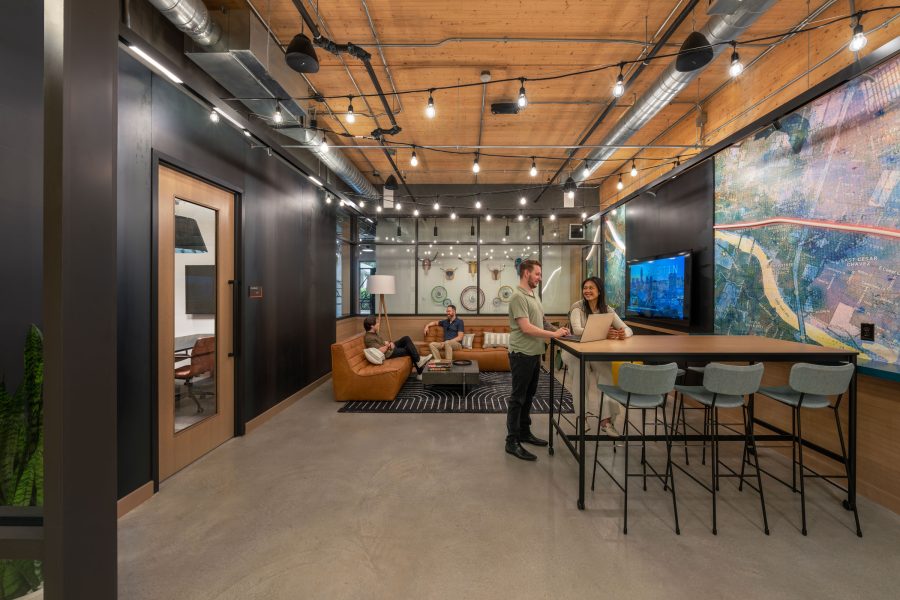
Completed in late 2023, T3 ATX Eastside in Austin, Texas, reflects the character of East Austin while shaping its evolving identity. Photo by Connor Steinkamp, courtesy of DLR Group
Completed in late 2023, T3 ATX Eastside in Austin, Texas, reveals biophilic design as both a mirror and canvas, reflecting the character of East Austin while shaping its evolving identity. The new office and residential development is rooted in the local history of the industrial site through a focus on materiality and refinement of metal and wood.
Here the facade acts as a storyteller, grounding the property in the energy of this emerging Austin neighborhood. Designed at a human scale, the project invites people in, surrounding them with the rare, tactile warmth of wood. Timber, terra-cotta brick, and cold-rolled steel serve as a material time capsule. These choices honor the region’s history and anchor the project in sustainable wellness.
True to its roots, all interior finishes were vetted through the Living Building Challenge Red List, and the majority of those selected are Red List–free, which identifies product solutions and materials free of harmful chemicals posing risks to human and environmental health.
Sustainably sourced wood gives T3 ATX Eastside a lighter carbon footprint and embodied carbon advantages over traditional concrete or steel construction. Just steps from Austin’s downtown core and public transit, the development invites a more walkable, sustainable way of living.
Looking Ahead
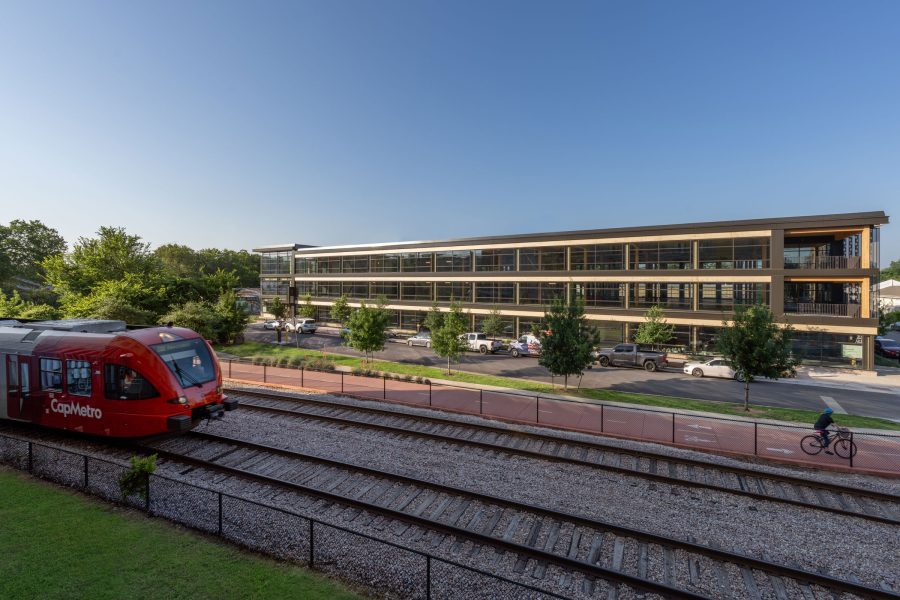
Just steps from Austin’s downtown core and public transit, T3 ATX Eastside invites a more walkable, sustainable way of living. Photo by Connor Steinkamp, courtesy of DLR Group
Mass timber in the built environment is only just getting started. As building codes continue to catch up to market demand, the possibilities for timber are endless. Our work with T3 buildings has led to greater interest in market sectors outside workplace, including multifamily housing and hospitality, where we recently released an assessment of the Mass Timber Hospitality Prototype. This effort, in collaboration with the US Forest Service, was driven by our desire to advance low-carbon building design and demonstrate mass timber’s potential in hotel development.
Biophilic and mass timber design are forging a new path for the built environment. As regulations evolve, mass timber and other natural materials provide developers and designers with a competitive advantage by delivering distinctive aesthetics and warm spaces that elevate the human experience and support a more sustainable future.

